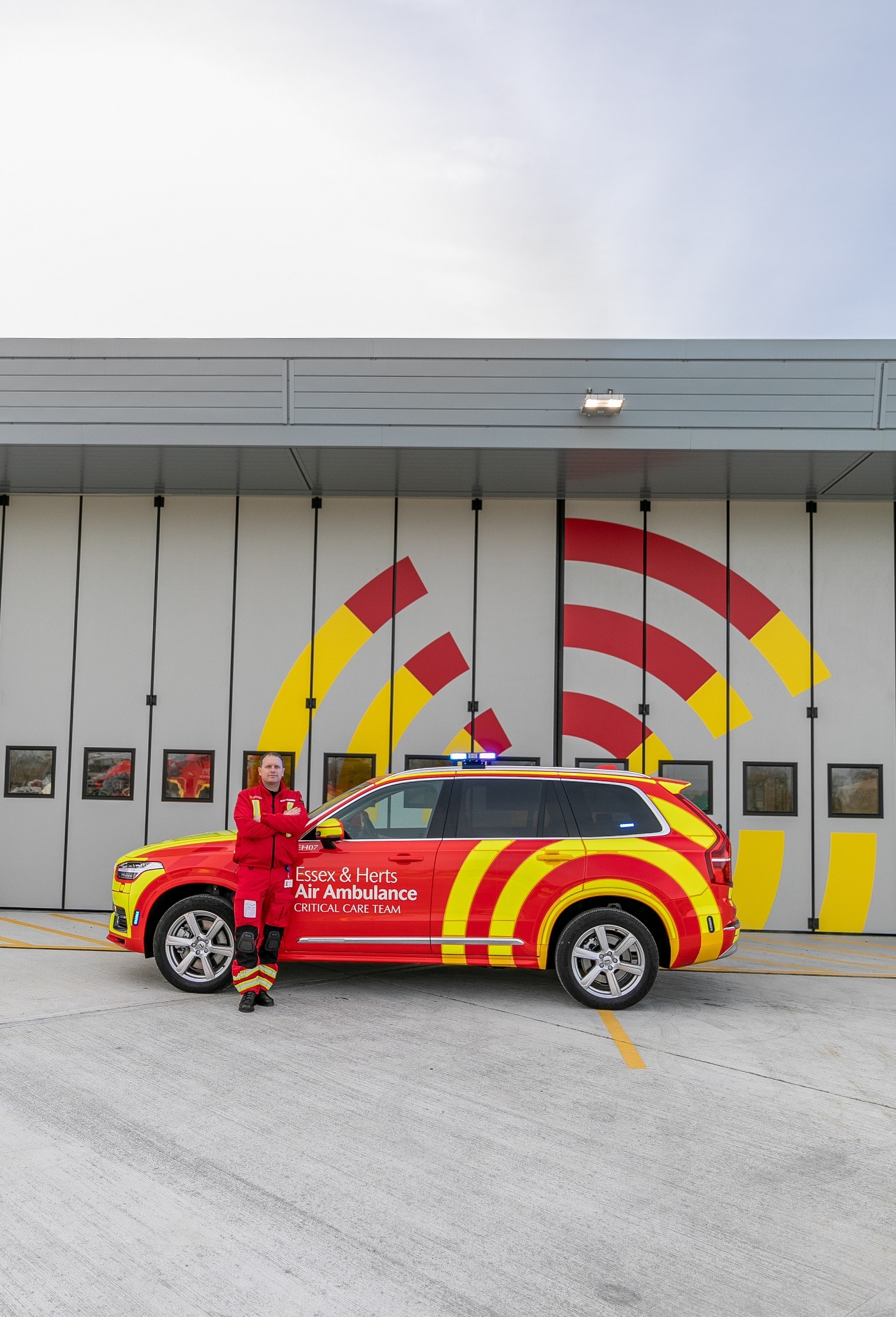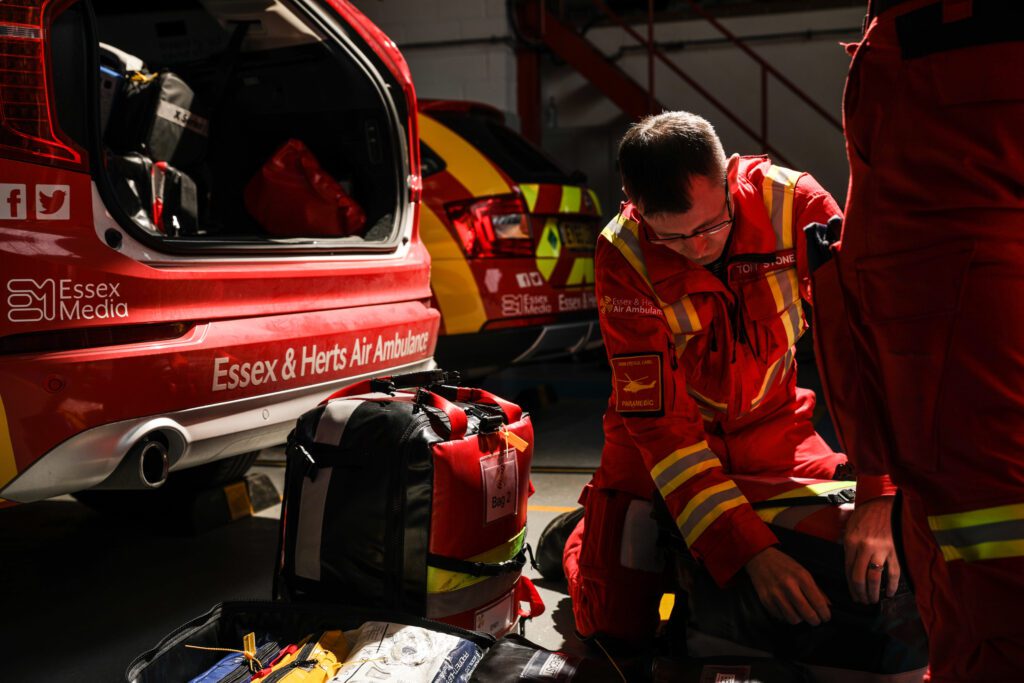RRVs
Our rapid response vehicles (RRVs) bring an advanced level of clinical care and equipment to the patient – far beyond that of a land ambulance or any other emergency vehicle.

Rapid Response Vehicles
Essex & Herts Air Ambulance introduced rapid response vehicles (RRVs) to our fleet in 2008, allowing our highly skilled critical care team to continue providing a first-class pre-hospital emergency medical service into the hours of darkness and in bad weather.
By 2019, the service became operational 24-7 for the first time, using helicopters by day, and switching to RRVs before sunrise. Our RRVs, based at both airbases, play an important role in ensuring our crew can continue to respond quickly and safely to emergencies when the helicopter is unable to fly because of poor weather or maintenance. The helicopters are also unavailable for half an hour at the start and finish of their shifts to allow time for required daily aircraft checks and briefings.
Elevating performance & sustainability
Our Volvo XC90 Recharge plug-in hybrid SUVs
As part of its commitment to make the very best choices for the environment and reduce its carbon impact, we became the first air ambulance in the UK to purchase Volvo XC90 Recharge plug-in hybrid SUVs for use as part of an emergency response fleet.
As well as providing pure electric driving producing zero tailpipe emissions, the new vehicles give better results when measured against the traditional miles per gallon, reducing fuel costs. The hybrids are powered by an electric motor and a combustion engine, which work together seamlessly to deliver optimal efficiency, reduced tailpipe emissions and a smooth, powerful drive. Both RRVs are also fitted with a modern and innovative AI-powered telematics platform, which allows EHAAT to ensure optimum operational efficiency is maintained. Our RRVs are also wrapped with innovative and highly reflective branding, with the latest blue light system to enhance visibility and safety.

Why do we use RRVs at night?
Flying at night has increased costs, requiring additional equipment and training. There is also currently a lack of lit helipads in this region. We will be analysing the missions we are tasked to, so that we can evaluate the need for us to fly at night. If the need is identified for us to attend patients at night who we cannot reach by RRV during the night, we will consider night flying.

Specially adapted to carry state-of-the-art life-saving equipment
EHAAT’s RRVs are crewed by a Pre-hospital Care Doctor and a Critical Care Paramedic and they carry the same life-saving equipment as the helicopters. Our Volvo XC90 Recharge plug-in hybrids have been specially adapted with upgraded brakes and suspension, and we’ve provided quick and easy access to the new charging points.
XC90 Recharge
Top Speed: 112mph
Power: 455hp
Electric Range: 41 miles
CO2 Emissions: 28g/km

